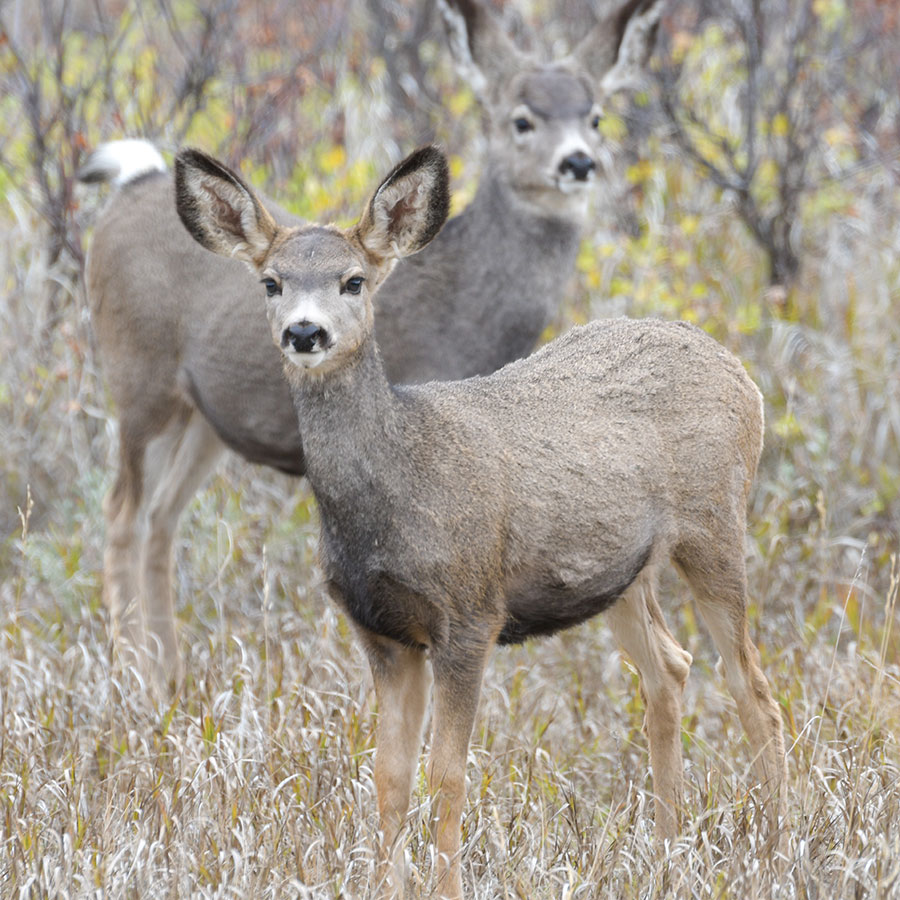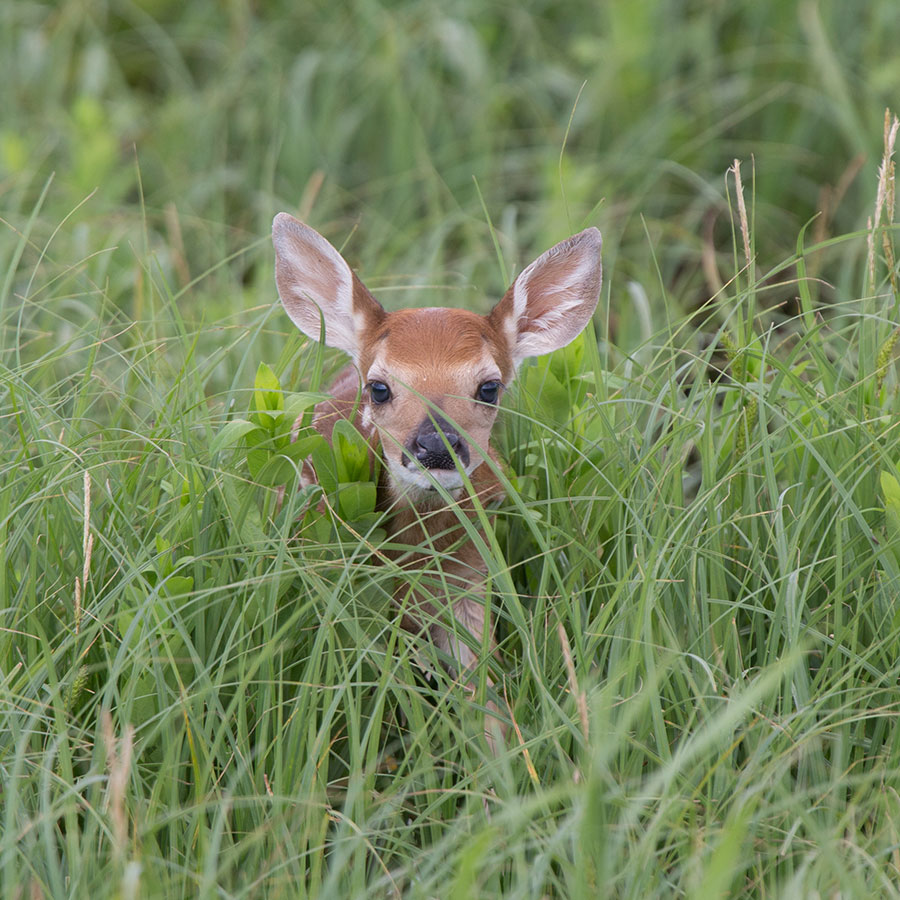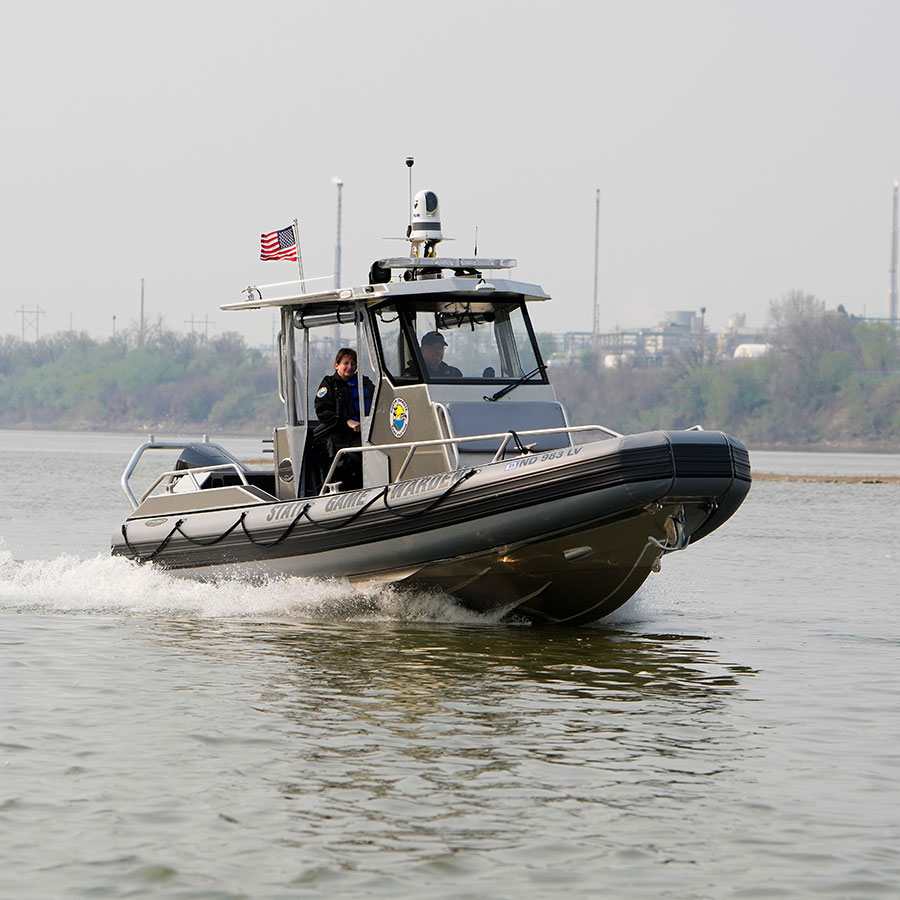The North Dakota Game and Fish Department completed its annual mule deer survey, and results indicate western North Dakota’s mule deer population is 29% lower than last year and 5% below the long-term average.
Biologists counted 1,994 mule deer in about 286 square miles during this year’s survey. The overall mule deer density in the badlands was seven deer per square mile.
Bruce Stillings, Department big game management supervisor, said declines are due to effects from extreme winter conditions this year and historic blizzards from the previous spring that produced approximately 40 inches of snow with high winds and low temperatures.
Biologists had concerns with mule deer numbers heading into winter based on results from the fall survey. The fall survey is conducted to assess demographics of mule deer in the badlands. Buck to doe ratio and fawn production expressed as fawn to doe ratio are determined to evaluate population status and productivity of mule deer.
Biologists counted 1,116 mule deer in the aerial survey in October, which was 31% lower than 2021. The ratio of 69 fawns per 100 does was higher than 2021 (60/100) but well below the long-term average (87/100), while 40 bucks per 100 does was similar to 2021 (38/100) and the long-term (43/100).
The spring mule deer survey is used to assess mule deer abundance in the badlands. It is conducted after snow melt and before trees begin to leaf out, providing the best conditions for aerial observations of deer. Biologists have completed aerial surveys of the same 24 study areas since the 1950s.
The fall aerial survey, conducted specifically to study demographics, covers 24 study areas and about 306 square miles in western North Dakota. Biologists also survey the same study areas in spring of each year to determine deer abundance.
The North Dakota Game and Fish Department offers a simple message to the well-intentioned who want to pick up and rescue what appear to be orphaned baby animals this time of year: don’t touch them. Whether it is a young fawn, duckling, cottontail rabbit or a songbird, it is better to leave them alone.
Often, young animals are not abandoned or deserted, and the mother is probably nearby. Young wildlife are purposely secluded by adults to protect them from predators.
Anytime a young wild animal has human contact, its chance of survival decreases significantly. It’s illegal to take wild animals home, and captive animals later returned to the wild will struggle to survive without possessing learned survival skills.
The only time a baby animal should be picked up is if it is in an unnatural situation, such as a young songbird found on a doorstep. In that case, the young bird can be moved to the closest suitable habitat.
People should also steer clear of adult wildlife, such as deer or moose that might wander into urban areas. Crowding stresses animals and can lead to a potentially dangerous situation.
In addition, motorists are reminded to watch for deer along roadways. During the next several weeks young animals are dispersing from home ranges, and with deer more active during this time, the potential for car deer collisions increases.
The North Dakota Game and Fish Department encourages students to design Earth Day patches to bring greater awareness to the environment in the state and elsewhere.
Yet, like Earth Day, which began in 1970 and kicked-started the environmental movement, the concern for our outdoor places isn’t simply a once-a-year-thing, but ongoing.
Understanding this, the Game and Fish Department supports Earth Day, Every Day to promote continual awareness about the environment.
Anyone who participates in public land cleanup and improvement projects will receive the 2023 Earth Day Patch to recognize their service and celebrate Earth Day. Projects that qualify include refuse removal on local, state or federal property, and landscaping on public property such as planting trees, bushes and pollinator plants.
For more information, or to request patches for your group’s service project, contact Sherry Niesar, Earth Day coordinator, at 701-527-3714.
Boat owners should take note of a U.S. Coast Guard fire protection regulation.
Recreational boats with a disposable (non-rechargeable) fire extinguisher with a manufacture stamped date on the bottle that is older than 12 years are considered expired and must be removed from service. Fire extinguishers with a label stamped “Marine Type – USCG Approved” are considered up-to-date, and extinguishers without a date or marine label are most likely older than 2007 and must be replaced.
The following recreational boats are required to carry marine fire extinguishers:
- Boats with permanently installed fuel tanks.
- Spaces that are capable of trapping fumes, such as:
- Closed compartments, such as under seats.
- Double bottoms not sealed to the hull or not completely filled with flotation material.
- Closed living space.
- Closed stowage compartment where combustible or flammable materials are stowed.
The North Dakota Game and Fish Department recently paid more than $729,000 in taxes to counties in which the Department owns or leases land. The 2022 in-lieu-of-tax payments are the same as property taxes paid by private landowners.
The Game and Fish Department manages more than 200,000 acres for wildlife habitat and public hunting in 51 counties. The Department does not own or manage land in Traill or Renville counties.
Following is a list of counties and the tax payments received.
Property Tax Amounts
| County |
Tax Due |
| Adams |
188.88 |
| Barnes |
7,156.73 |
| Benson |
5,450.72 |
| Billings |
283.14 |
| Bottineau |
6,734.57 |
| Bowman |
2,410.45 |
| Burke |
1,039.71 |
| Burleigh |
26,938.28 |
| Cass |
8,108.37 |
| Cavalier |
14,957.59 |
| Dickey |
13,332.74 |
| Divide |
2,553.30 |
| Dunn |
5,283.76 |
| Eddy |
6,744.22 |
| Emmons |
7,576.85 |
| Foster |
1,062.48 |
| Golden Valley |
169.45 |
| Grand Forks |
20,460.43 |
| Grant |
1,218.15 |
| Griggs |
100.92 |
| Hettinger |
4,595.39 |
| Kidder |
12,673.84 |
| LaMoure |
11,823.72 |
| Logan |
419.22 |
| McHenry |
1,686.94 |
| McIntosh |
9,897.14 |
| McKenzie |
37,026.45 |
| McLean |
128,414.51 |
| Mercer |
21,489.12 |
| Morton |
25,618.49 |
| Mountrail |
6,438.72 |
| Nelson |
8,005.98 |
| Oliver |
2,825.03 |
| Pembina |
12,046.98 |
| Pierce |
3,327.71 |
| Ramsey |
17,160.43 |
| Ransom |
2,217.07 |
| Richland |
19,230.42 |
| Rolette |
54,942.69 |
| Sargent |
21,073.44 |
| Sheridan |
86,485.63 |
| Sioux |
221.60 |
| Slope |
1,948.20 |
| Stark |
5,646.82 |
| Steele |
10,947.41 |
| Stutsman |
5,688.19 |
| Towner |
2,501.88 |
| Walsh |
10,565.23 |
| Ward |
59.16 |
| Wells |
62,793.31 |
| Williams |
9,682.14 |
The North Dakota Game and Fish Department’s enforcement division debuted a new boat this spring on the Missouri River.
The boat used to patrol the Missouri is an upgrade from the previous boat employed by game wardens in that it features a drop-down bow that enables wardens to get on and off sandbars much easier.
One of the other features is a marine night vision camera for search and rescue purposes.
“Overall, it’s a sturdier boat,” said Jackie Lundstrom, Department operations supervisor. “This will be the boat that will help us improve our enforcement and help get the job done on the water.”





